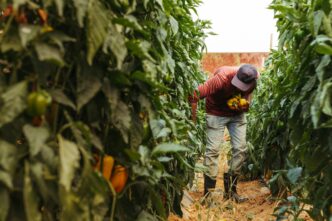Brixton Venture Lab has recently updated its comprehensive mapping of the agtech and foodtech ecosystem in Spanish-speaking Latin America and the Caribbean.
This map highlights companies providing innovative solutions aimed at creating more sustainable, inclusive, and resilient agri-food systems. It redefines how food is produced, distributed, and consumed across the region.
The ecosystem now includes 618 companies from 20 countries, with Argentina, Mexico, Chile, and Colombia accounting for 80% of these enterprises. The categories of “Systems and IoT for the Agricultural Sector” and “Health and Agricultural Biotechnology” dominate, making up 63% of the total companies. Notably, “Beverages and Alternative Proteins” holds a significant share at 8%, with Mexico and Chile at the forefront, indicating a potential growth opportunity for the foodtech sector.
With the growing global demand for food driven by population growth, the agricultural sector is in a constant state of adaptation and change. Latin America plays a critical role in this dynamic, being the leading net exporter of agri-food products worldwide. However, the region faces significant challenges, including the need to adapt to technological advances, climate change, and food security concerns.
Amidst these challenges, agtech and foodtech startups are pivotal in ensuring the region’s and the world’s food supply. These companies employ technology to enhance agricultural systems, from artificial intelligence to sustainable practices, promoting systems that are more sustainable, inclusive, and resilient.
Financial Strategies for Agrifoodtech in LATAM
Given the reduced investment levels in 2023, agrifoodtech companies in LATAM must explore alternative funding sources such as government grants, strategic partnerships, and debt financing. Emphasizing lean operations and efficient resource allocation can help stretch available capital further, ensuring growth despite financial constraints.
To attract venture capital, agrifoodtech startups should focus on key financial benchmarks such as revenue growth, gross margins, CAC to LTV ratio, market size, and unit economics. These metrics provide investors with insights into the startup’s growth potential, profitability, and scalability.
Ensuring capital efficiency while scaling operations can be achieved by leveraging technology, optimizing processes, and focusing on high-impact areas. Maintaining a lean approach, monitoring KPIs closely, and investing in sustainable practices can maximize capital use and drive long-term growth.
Market Opportunities and Growth Drivers
Entering new markets within LATAM requires thorough market research to understand local dynamics, consumer preferences, and regulatory environments. Forming strategic partnerships with local stakeholders such as farmers, distributors, or government agencies can help navigate regulatory hurdles and gain market insights. Utilizing digital platforms and e-commerce channels can facilitate market access and enable efficient distribution. Adapting products or services to local needs and maintaining a focus on sustainability and innovation are crucial for successful market penetration.
The growth in “Health and Agricultural Biotechnology” is driven by increasing demand for sustainable agricultural practices, higher crop yields, and improved food safety. Advances in biotechnology, including genetic engineering and precision agriculture, enable farmers to enhance productivity while minimizing environmental impact. Rising consumer awareness and regulatory support for biotech solutions further fuel this segment’s growth.
Similarly, the growth in “Systems and IoT for the Agricultural Sector” is propelled by the need for increased efficiency, productivity, and sustainability. IoT technologies, including sensors, drones, and data analytics platforms, enable farmers to monitor and manage operations in real-time, optimize resource usage, and make data-driven decisions. Declining costs of IoT devices, expanding internet connectivity, and supportive government policies contribute to the rapid adoption of these technologies.
Disruptive Innovations and Future Trends
Several disruptive innovations are set to significantly impact the agrifoodtech industry. Vertical farming and indoor agriculture technologies enable year-round crop production in controlled environments, reducing water usage, land footprint, and transportation costs. Cellular agriculture and lab-grown meat offer sustainable alternatives to traditional animal agriculture, addressing concerns related to animal welfare, environmental degradation, and food security.
Blockchain technology enhances transparency and traceability in the agrifood supply chain, allowing consumers to track food products from farm to fork. AI and predictive analytics empower farmers to optimize crop management practices, predict yield fluctuations, and mitigate risks associated with climate change and pest outbreaks.
Challenges and Strategies for Success
Achieving higher market penetration for agrifoodtech in LATAM faces several barriers. Regulatory hurdles due to complex and inconsistent regulations across countries can hinder market entry. Engaging with policymakers to streamline regulations and ensure compliance is crucial. Inadequate infrastructure, such as limited internet connectivity and transportation networks, can impede market access. Investing in infrastructure development and leveraging mobile technology can help overcome these barriers.
Limited access to finance is another challenge. Encouraging investment through government incentives, venture capital networks, and impact investors can alleviate this barrier. Additionally, consumer awareness and education are vital. Companies should focus on educating consumers about the benefits of agrifoodtech solutions through targeted marketing campaigns, demonstrations, and partnerships with local communities and NGOs.
Deeply ingrained traditional farming practices may resist technological adoption. Providing training, demonstrating the economic and environmental benefits of agrifoodtech solutions, and fostering collaboration with local farmers can help overcome this barrier.
Investment Criteria and Risk Management
When evaluating agrifoodtech startups for investment, several key criteria are considered. Market potential is assessed by examining factors like population trends, food demand, and the competitive landscape. The startup’s technology innovation is scrutinized for its uniqueness, scalability, and potential to disrupt traditional agriculture practices. The expertise of the founding team is also critical, looking for deep industry knowledge and the ability to execute the business plan effectively.
Business traction, including customer acquisition, revenue generation, and milestone achievements, is carefully reviewed. Social and environmental impact, regulatory and operational risks, and potential exit opportunities are also evaluated to gauge the startup’s long-term viability and scalability.
Managing risks associated with technological implementation and market volatility involves diversifying product offerings and customer base. Implementing robust cybersecurity measures to protect sensitive data and systems is crucial. Conducting thorough risk assessments, developing contingency plans, and maintaining strong relationships with suppliers and partners help mitigate operational risks. Proactively monitoring market trends and adapting business strategies enable companies to respond effectively to market volatility.
The Road Ahead
Brixton Venture Lab’s mapping identifies 618 agrifoodtech companies in Spanish-speaking Latin America and the Caribbean. This ecosystem, enriched by technological innovation and a commitment to sustainability, is poised for significant growth. The continued focus on disruptive innovations, strategic partnerships, and effective risk management will ensure that these companies can navigate challenges and seize opportunities in the evolving agrifoodtech landscape.
For those interested in further details or potential collaborations, Brixton Venture Lab invites inquiries and engagement to explore the dynamic world of agrifoodtech.
Check out the complete report by Brixton Ventures’s website





